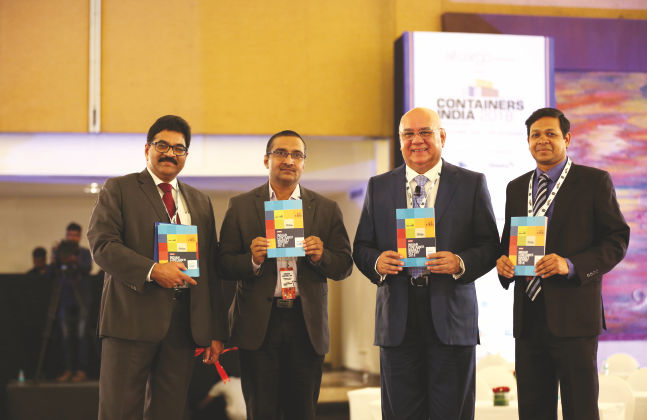The inaugural session set the tone for day-long deliberations that focussed on some of the recent changes and trends witnessed in the Indian containerised trade
At the outset, Ramprasad, Editor-in-Chief and Publisher, Maritime Gateway took a quick flashback of the developments in the industry at the international level, since the last edition of Containers India. At the global level, political systems have become more volatile and certain nations have become more aggressive in their trade strategies, resulting in trade wars. In India initiatives such as demonetisation, GST and DPD had their impacts, but on the positive side a lot of container handling capacity has been added with PSA, Paradip, Ennore and Dhamra terminals getting operationalized.
Detailing on the positive growth trajectory the Indian containerised trade has posted, Ramprasad said, “The trade performance in Q1 of FY18 has been better than the past two years. In FY 2017-18, the total throughput of Indian container terminals registered was 15.37 million teus, with Y-o-Y growth of 12 per cent and in the same year the total installed capacity registered was 27.05 million teus, reflecting lower capacity utilisation on the overall level that stood at 57 per cent. But on the flip side, imports have grown by 16 per cent and exports by 7 per cent.”
There has been a lot of shakeup in the industry in the name of liner consolidation, digitalisation and infrastructure upgrades. But this rebound in trade indicates that the economy has been able to tide over all these. More details on the performance of India’s containerised trade were revealed by Dr Subrata Behera, Manager – Ports & Containers Research, Drewry Maritime Services Pvt Ltd. He elaborated on how the sixth edition of Indian Container Market Annual Report has been developed to be less analytical and more informative. Capt. Deepak Tewari, Chairman, CSLA, spelled out certain changes that will affect the maritime industry. Counting on the growth happening across the globe he said, “The world trade is expected to grow at 4.7 percent in 2018 and 4 per cent in 2019. This growth bodes well for maritime trade. Some of the challenges will be in the form of trade sanctions and barriers by countries having a more local perspective rather than a global perspective. For instance, the US has started new negotiations in the trade agreements they earlier participated and have also withdrawn from certain agreements. This will have its domino effect on global trade. Container shipping will continue to face overcapacity till first half of 2019 as the large vessels will be deployed on the east-west trade lanes. By the end of 2020 there will be a balance between capacity and demand. Rising bunker cost is a major factor that is pushing operational cost of shipping lines. With the implementation of IMO regulations the global bunker cost will increase to $125 billion annually.
On the Indian coast, relaxation of Cabotage will increase transhipment and boost competition for moving both exim and empty containers. The exemption of vessel sharing agreements from Competition Act will enable shipping lines better plan their services to Indian trade. The creation of a National Integrated Logistics Portal will make it very easy for shippers to find service providers. Guest of honour, Subhash Agrawal, IRS, Commissioner (NSIV), Jawaharlal Nehru Custom House, Department of Revenue, Ministry of Finance, Government of India, gave insights into how Customs have evolved from manual system of operation to using electronic systems such as the ICA system and RMS. New schemes such as SWIFT, E-SANCHIT, AEO and DPD have made the lives of importers much easy, reducing time and cost of transactions.






